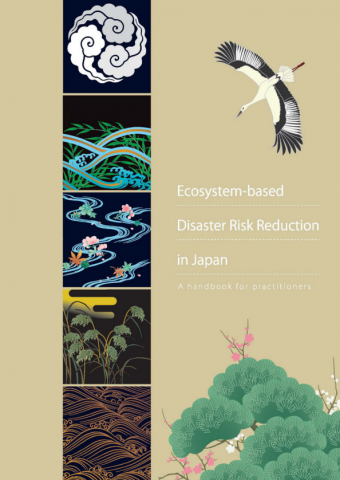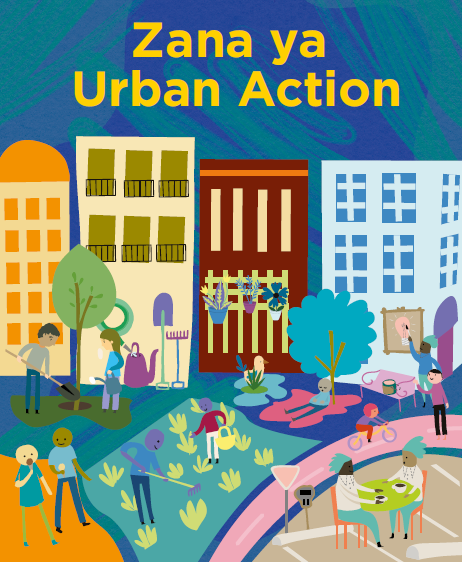Understanding climate change – internal migration/displacement nexus in the context of coastal cities
 Download Full report: Understanding Climate Change – Coastal and Displacement
Download Full report: Understanding Climate Change – Coastal and Displacement
This study presents a synthesis of the currently available data, analysis and projections, and reports on climate induced displacement and migration in coastal communities. It attempts to unpack the compounding effects of internal migration/displacement caused by climate-weather related events on cities and towns located in low-lying coastal/shoreline and delta areas (for abbreviation, referred to as “coastal cities”).
It is projected that approximately 800 million people in 570 cities will be exposed to the risks related to rising seas and storm surges by 2050 [[i]]. The impacts of climate change, particularly climate- and weather-related disasters are already having a large effect on global migration and displacement patterns globally [[ii]]. In the past decade, 86% of all disasters triggered by natural hazards were caused by weather-and climate-related events, killing over 410,000 people, and affecting 1.7 billion [[iii]].
Coastal settlements range from small settlements to small island states with maritime populations and/or beaches and atolls that are major tourist attractions, large cities that are major transport and financial hubs in coastal deltas, to megacities and even megaregions with several coastal megacities. The Sixth Assessment Report of the Intergovernmental Panel on Climate Change (IPCC) [[iv]] mentions involuntary displacement and migration among the many adverse impacts of climate change. It notes the ocean-driven coastal risks to people, land and infrastructure in places associated with higher inequality and high growth rates, especially in deltas, leading to larger vulnerability and exposure (with high confidence[1]), respectively, under higher warming levels. Coastal areas also face climate hazards that are not specific to the coast, including heat waves, snowstorms, heavy rainfall, flooding, storms, and landslides. Rapidly urbanizing coastal areas are at particularly high risk of losses due to their location and exposure to extreme natural events including tides, currents and waves, runoff, storms, sediment flow, and erosion.
As temperatures and sea levels rise, climate change contributes to flash floods, salinization of water sources, and more intense storm surges associated with severe cyclones. The Asia and Pacific region have the highest risk of flood displacement, with more than 86% of those at risk living in urban and peri-urban areas [[i]].
Coastal cities also face climate hazards that are not specific to their coastal location, including heat waves, snowstorms, heavy rainfall, flooding, storms, and landslides. While large scale sudden-onset events such as flash floods have the potential to destroy assets, lives, and livelihoods, slow-onset events, such as sea level rise, drought, and desertification may interact with and aggravate sudden-onset hazards such as storm surge [[i]]. In 2013, the sudden onset of Typhoon Haiyan within the Philippines caused significant damage to buildings and infrastructure, flooding in low-lying areas, landslides and storm surges [[ii]]. For coastal cities and urban areas, the heat island effect[1] worsens the impacts of drought and aridity. The IPCC assessment report notes that droughts, whether meteorological, hydrological, agricultural, or ecological, and while differing by region, also significantly impact cities through groundwater withdrawal and thus depletion [[iii]].
[1] Urban areas, where built-up structures and traffic flows are highly concentrated and greenery is limited, become “islands” of higher temperatures relative to outlying areas. These pockets of heat are referred to as “heat islands.”
[i] IDMC: Unsettlement: Urban displacement in the 21st century
[ii] Lagmay, A.M. (2015), Devastating storm surges of Typhoon Haiyan, International Journal of Disaster Risk Reduction, Vol. 11, March 2015, https://doi.org/10.1016/j.ijdrr.2014.10.006
[iii] IPCC (2022)
[i] IDMC GRID. 2019. Flood Displacement Risk – An urban perspective
[1] IPCC describes the level of confidence as very low, low, medium, high and very high, expressing evidence, agreement and confidence. For a given evidence and agreement statement, increasing levels of evidence and degrees of agreement are correlated with increasing confidence.
[i] UNDESA (2018), World Urbanization Prospects,
UNHabitat (2021) World Cities Report, https://unhabitat.org/World%20Cities%20Report%202020
[ii] IFRC (2021), Displacement in a Changing Climate,
[iii] IFRC, (2020) World Disasters Report: Come Heat or High Water.
[iv] IPCC (2022) Glavovic, B.C., et al. Cities and Settlements by the Sea, Impacts, Adaptation and Vulnerability. Contribution of Working Group II to the Sixth Assessment Report of the Intergovernmental Panel on Climate Change.


